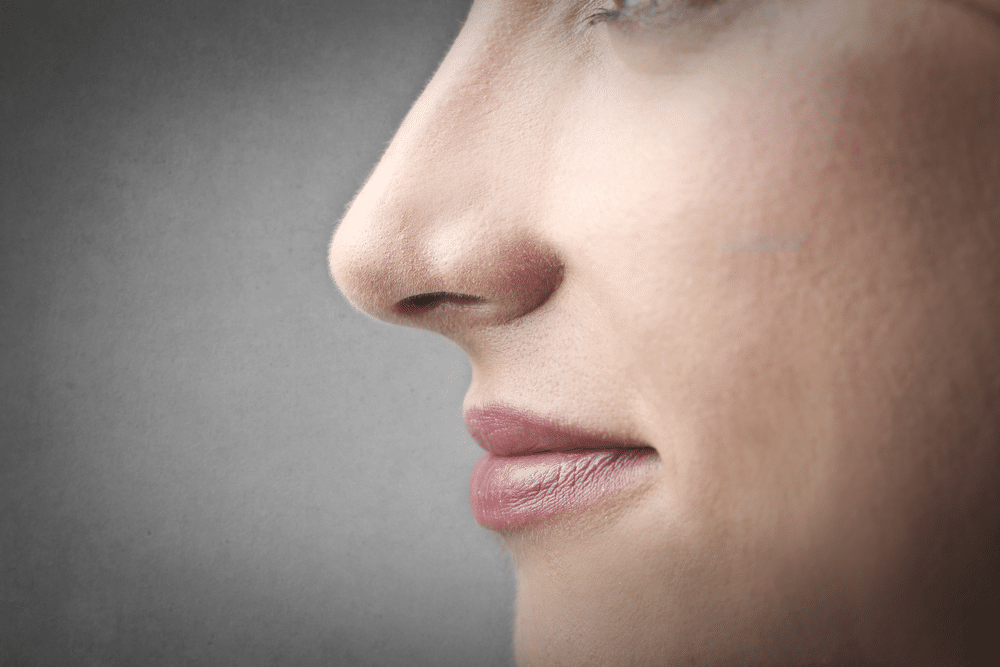For millions of people, nasal breathing problems are a fact of life. If your breathing or sinus problems have are no longer tolerable, the experienced and knowledgable staff at New England Cosmetic Surgery & Laser Center in Boston, MA is here to help. We can offer options, including septoplasty, to correct your breathing problems and improve your life.
What Is a Septoplasty?
Septoplasty is a surgical procedure that is done to correct a deviated septum. During surgery, the nasal septum is trimmed if necessary and straightened. The surgery can be performed alone or with the addition of a rhinoplasty procedure to improve the cosmetic appearance of the nose. A majority of septoplasties can be done on an outpatient basis, which means that, once the general anesthesia wears off, the patient can go home the same day.
Why is Septoplasty Necessary?
The septum is a strip of cartilage approximately 7 cm long that separates the nostrils. The septum can become deviated, or crooked, following trauma such as a broken nose. In many cases, people are just born with a septum that is crooked; in fact, the experts report that it is extremely rare to see a patient with a perfectly straight nasal septum. A deviated septum causes the airway in one or both nostrils to be constricted or narrowed, which can make it difficult to breathe through the nose. Septal deviations can also lead to sinus issues such as congestion and chronic infections. Breathing issues can be worse at night and may include snoring, congestion, and postnasal drip.
Should I Consider Septoplasty?
As a general rule, good surgical septoplasty candidates meet the following criteria:
- Have difficulty breathing due to a deviated nasal septum
- Suffer from sleep disruption due to excessive shoring
- Are a nonsmoker
- Are generally in good health
A consultation with your physician is recommended if you are symptomatic with difficulty breathing, snoring, or sleep interruptions. There may be treatment options available prior to opting for surgery, and these can also be discussed with your doctor and/or surgeon.
Details of the Procedure
Preoperative Consultation and Testing
As with any medical treatment, you should tell your surgeon about all the medical problems you have and all the medications you are taking. Alleriges and bleeding problems should also be reported at this time. A preoperative examination and consultation will be completed with your surgeon, which may include lab work and/or a nasal endoscopy so your physician can get a thorough picture of the issues with your nose. If you are taking any nonprescription medications or herbal supplements, your doctor will probably suggest that you stop taking those for at least seven days prior to surgery. This is especially important with NSAID pain relievers (nonsteroidal antiinflammatories such as ibuprofen or aspirin) to minimize the potential for postoperative bleeding.
The Day of the Procedure
On the day of your scheduled procedure, you will be taken to the treatment room and prepped in a sterile fashion. In most cases, general anesthesia is administered, although local is an option for some situations. Once the anesthesia takes effect, the nose is cleansed thoroughly inside and out and the nasal hairs are trimmed. A small incision is made in the nasal mucosa, the thin tissue lining inside the nostrils, to allow access to the septum and other nasal structures.
How A Septoplasty Procedure is Performed
At this point, the septal deviation correction will begin, which will take anywhere from 30 to 90 minutes to complete To do this, the surgeon will remove, trim, and reshape the bone and cartilage as needed using sharp scissors or a scalpel. While the bone may be trimmed and/or reshaped, it is not necessary to break the nose during a septoplasty. The internal nasal structures are arranged so the septum is straight, eliminating any blockages that existed. When the procedure is completed to the surgeon’s satisfaction, the mucosa is replaced over the septum. Surgery is now complete.
Before the patient is awakened, a splint will be applied to the nose. This may involve the application of splints or soft plastic sheets to hold the septum and other structures in place during healing, prevent nose bleeds, and discourage scarring. Dissolvable sutures may also be used if the surgeon deems them necessary. In some cases, packing may be applied inside the nose, but this is rare. Your surgeon will tell you when the packing and/or splints can be removed. When the surgical staff is comfortable that the patient is fully awake and exhibiting no negative side effects from anesthesia or surgery, the patient will be discharged to home the same day.
Postoperative Care and Followup
Follow-up care with the staff at your surgeon’s office is important following septoplasty. The splints will stay in place for one to two weeks. Nasal packing, if used, can be removed after 24 to 36 hours. If dissolvable sutures were placed, these will disappear on their own over time. The staff at your surgeon’s office will provide you with postoperative care instructions regarding such things as blowing or cleaning your nose, the use of saline sprays, and what circumstances might be considered an emergency requiring medical attention. Be sure to follow all postoperative advice as this will aid in the healing process and long-term success of the procedure.
Schedule a Consultation
If you believe you are a good candidate for septoplasty and would like more information, call us today at New England Cosmetic Surgery & Laser Center in Boston, MA is here to help. Schedule your initial consultation so you can put your nasal breathing problems behind you.
